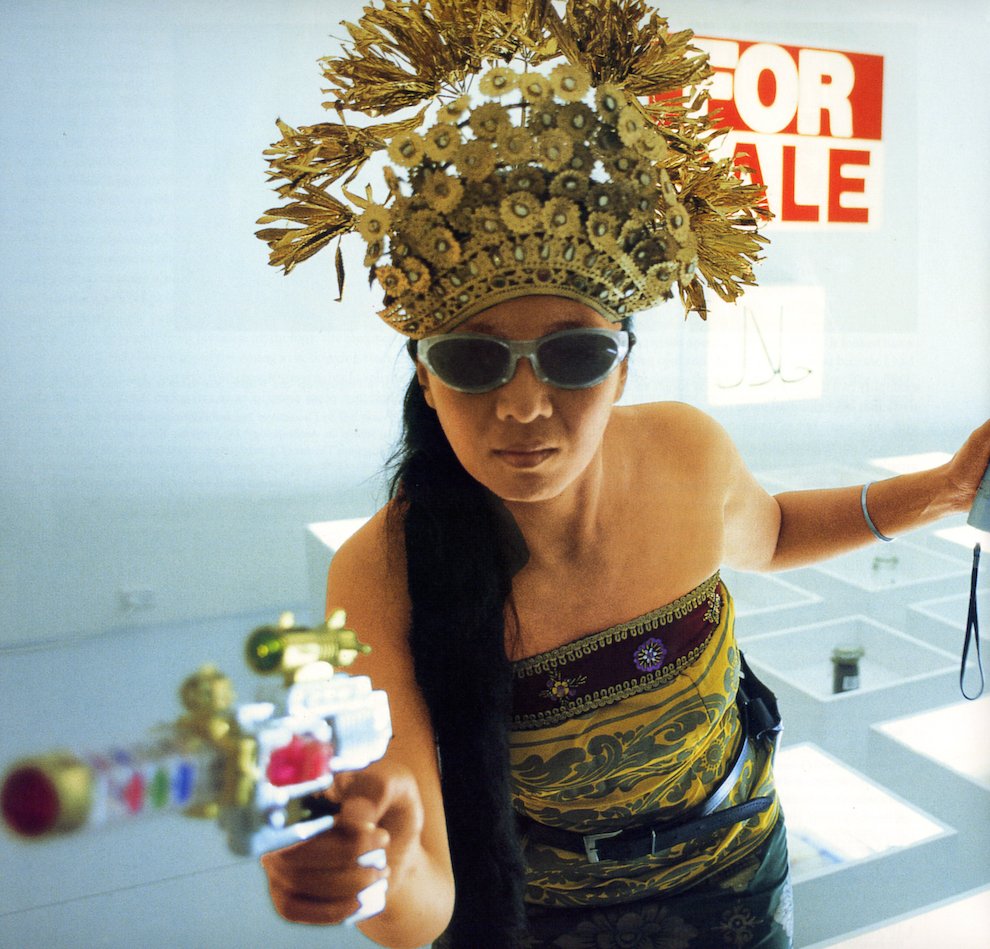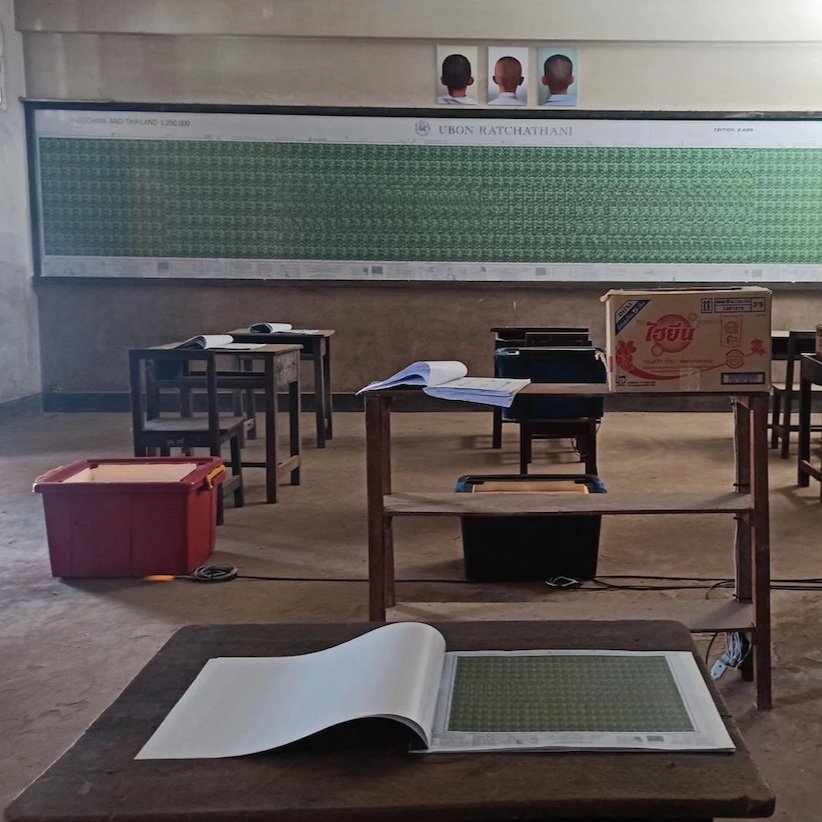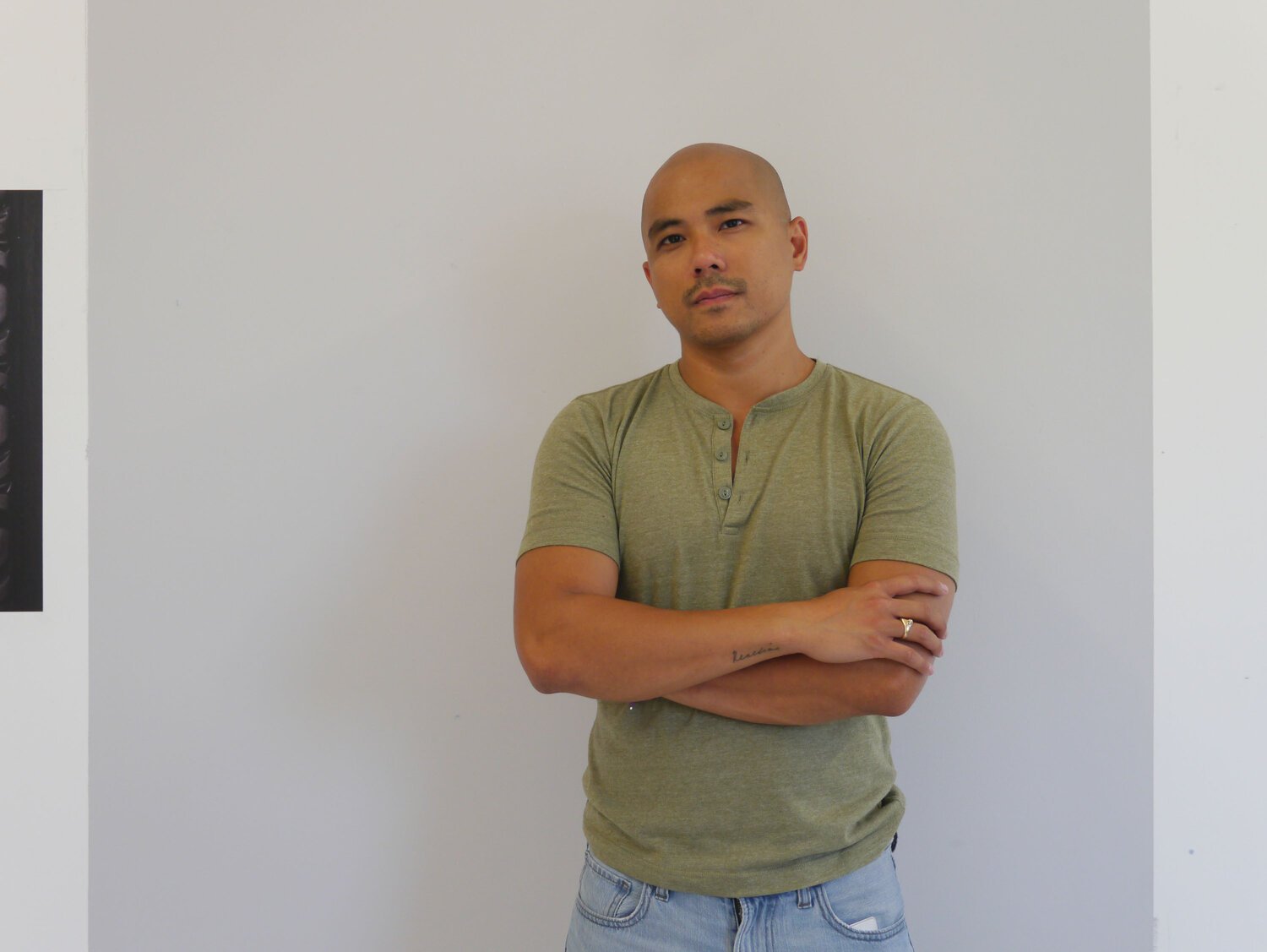Conversation with Vietnamese-American photographer An-My Lê
đô-mi-nô’ at Marian Goodman Gallery in New York
By Ian Tee
An-My Lê, ‘Viet Cong Camp’, from ‘Small Wars’, 1999-2002, silver gelatin print, 67.3 x 96.5 cm. Image courtesy of the artist and Marian Goodman Gallery. Copyright: An-My Lê.
An-My Lê’s work offers a reflection on how reality and myth are portrayed and contested. Born in Saigon in 1960, she fled Vietnam as a teenager with her family and eventually settled in the United States as a political refugee. Through the medium of photography, she interrogates the ways memory and geopolitics shape media representations of war, national identity and community.
Solo exhibitions of Lê’s work have been presented at the Carnegie Museum (Pennsylvania, USA, 2020), Sheldon Art Museum (Nebraska, USA, 2017), Museum Aan de Stroom (Antwerp, Belgium, 2014), Dia: Beacon (New York, USA, 2008), amongst others. An-My is a recipient of numerous awards, including the MacArthur Foundation Fellowship (2012), the Louis Comfort Tiffany Foundation Award (2009) and John Simon Guggenheim Memorial Foundation Fellowship (1997).
In this conversation, Lê talks about her transition into a career in art, her relationship with photography and ‘đô-mi-nô’, her latest solo exhibition at Marian Goodman Gallery in New York.
Portrait of Denis Pernet. Image courtesy of © Audemars Piguet.
I would like to start the conversation by asking about how you came to art. In a way, it was somewhat a career switch after having trained as a biologist. Did you have any reservations then and what made this transition viable?
I discovered photography by chance and something cracked open for me. I was able to connect with the medium, its process and possibilities in many ways. This sounds cheesy but I felt for the first time that I could possibly build for myself a life that is meaningful. At that point, becoming a photographer only meant choosing a different career path. I did not necessarily understand I would be embracing the life of an artist and its full ramifications. I did not grow up around artists. Both my parents are educators. My two brothers are electrical engineers who went to business school.
Of course, I was terrified to jettison my prospects in medicine. It seemed reckless to embark on this venture into the unknown. Yet, there are many examples of accomplished people who find their groove later in life in the United States (U.S.). I think the American education system allows for much more flexibility than other systems. Hard work and persistence also made the transition viable for me.
An-My Lê, ‘Night Operations III’, from ‘29 Palms’, 2003-04, silver gelatin print, 67.3 x 96.5 cm. Image courtesy of the artist and Marian Goodman Gallery. Copyright: An-My Lê.
You are best known for the ‘29 Palms’ (2003-04), a series of black-and-white photographs made in the California desert where the U.S. Marines trained for battle prior to deployment in Iraq. I am curious about the process behind preparing for a project like this. Were there clearances you had to go through, both personally and for the photographs you took?
Photographing the Vietnam War reenactors very much prepared me for ‘29 Palms’. I learned to navigate in the field with the view camera and when it was too cumbersome and slow, I resorted to improvising and “directing”. Getting permission, planning, organising were arduous and necessary tasks but at least they could be solved. I had to learn it is okay to commit to an event without really knowing what I will find. I had to be cleared for access personally but I have never had to show my work for approval except when I was in Guantanamo Bay. I had an escort who looked at my ground glass to check every single frame. For security reasons, certain structures could not be shown in relation to others.
An-My Lê, ‘Untitled, Nam Ha, Viet Nam’, 1994, silver gelatin print, 45.6 x 27.9 cm. Image courtesy of the artist and Marian Goodman Gallery. Copyright: An-My Lê.
Much of your early work engages directly with the representation of Vietnamese people in literature and the media. Are there specific strategies that you employed in dealing with photography as a colonial tool?
I certainly do research and have ideas that stem from my curiosities and interests but I do not really strategise. So much of what I do involves going to a new place, meeting people I do not know, and being in unexpected situations. I am often intuiting my way into something. There is always this delicate balancing act I need to resolve between the instinctual and the analytical.
To see photography only as a colonial tool or as a tool for propaganda is myopic. But what is the colonial enterprise? It is a pretty straightforward job. Good colonial photography delivers the content in unambiguous ways and does not induce one to think much about the medium. Is photography the root of all evil? The medium is inscribed with power dynamics and potentials for exploitation. It can take a bit of your soul but the effective tools of colonialism are inscribed in the constitution, in the drawing of maps and borders.
I am not denying that photography is a tool for lying. For me, the opposite of the colonial tool is to have my experience. Photography allows me to see clearly what is in front of me. There is value in looking through a lens and being informed. If anything is revealed in my work, I do not know if it comes from meaning produced by formal arrangements or from grappling with the fact that perhaps I did not quite understand what I was looking at. I believe we should argue for specific representation, but ultimately, it is most impactful to concentrate our efforts on platforms for human rights.
“There is always this delicate balancing act I need to resolve between the instinctual and the analytical.”
Mark Aronson, Deputy Director and Chief Conservator at the Yale Centre for British Art, described your work as “bridging the documentary and the conceptual”. Did your thoughts about the boundaries between photojournalism and fiction change over time?
It tickles me that people are rattled by the fact that an image could be set up or not. This categorising also carries a moralistic overtone that seems pertinent in photography only. Realising that I am an artist first and foremost freed me up to overlook these contentions. I was originally drawn to photography because it gave me a great excuse to explore. I wanted to learn something new about the world, and about myself. The world and its offerings are still my starting point.
An-My Lê, ‘Fragment VI: General Robert E. Lee and P.G.T. Beauregard Monuments, Homeland Security Storage, New Orleans, Louisiana’, from ‘Silent General’, 2017, pigment print, 141.6 x 99.7 cm. Image courtesy of the artist and Marian Goodman Gallery. Copyright: An-My Lê.
An-My Lê, ‘Fragment VII: Trump Presidency, Oval Office, Saturday Night Live Set, NBC Studios, New York City’, from ‘Silent General’, 2018, pigment print, 101.6 x 143.5 cm. Image courtesy of the artist and Marian Goodman Gallery. Copyright: An-My Lê.
Your ongoing body of work ‘Silent General’ (2015-) marks a significant shift in your practice, in terms of the expansive range of images found within a single series as well as the methodology adopted. I like how you said that “the space between images is imbued with meaning”. Could you talk about the way this series is presented and the thought process behind how these images/fragments are strung together?
In many ways, ‘Silent General’ is my response to the unfolding of explosive social political events and their implications from the past five years. It has been very satisfying to use suites of images to express myself. The way the images are strung together create meaning. The space between images also functions as a transitional no man’s land that allows a carrying over of an imprint as a kind of ghost image of one’s engagement with the previous image. You also get to choose what and how you want to carry over from image to image. This creates a cumulative, idiosyncratic and complex experience.
Did the fallout of the COVID-19 pandemic and recent events such as the attack on the United States Capitol on 6 January 2021 affect how you continue developing ‘Silent General’? Are there new points of sensitivity you had to navigate?
We have been living in some intensely anxious times. The Covid pandemic, the January 6th event, the fires due to climate issues are devastating events. Perhaps because the Trump presidency has ended, I do not feel the same urgency to respond to every momentous event. I do not feel assaulted in the same way, and on a daily basis. It seems that I can have the mental and physical space to let the events sink in before I need to respond.
‘An-My Lê: On Contested Terrain’, 2020, exhibition view at Carnegie Museum of Art, Pittsburgh. Photo credit: Bryan Conley. Image courtesy of the artist and Marian Goodman Gallery. Copyright: An-My Lê.
Your photographs have been realised as silver-gelatin prints and pigment prints. What are your thoughts about the treatment/materiality of an image?
I do not overinvest in materials. The creative act happens for me out in the world, not when I return to the studio or the darkroom. I realise this may not seem fully creative. My priority is to inscribe within the picture what I experienced. It is all about fidelity, and fullness of expression.
“My priority is to inscribe within the picture what I experienced. It is all about fidelity, and fullness of expression.”
An-My Lê, ‘Black is Beauty, Think Black, Act Black, Live Black, We Shall Over Run’, 2021, 3 vintage lighters, cotton yarn, 16.5 x 32.4 x 3.8 cm. Photo credit: Alex Yudzon. Image courtesy of the artist and Marian Goodman Gallery. Copyright: An-My Lê.
‘An-My Lê: đô-mi-nô’, 2021, exhibition view at Marian Goodman Gallery, New York. Photo credit: Alex Yudzon. Image courtesy of the artist and Marian Goodman Gallery. Copyright: An-My Lê.
In your latest exhibition ‘đô-mi-nô’, at Marian Goodman Gallery in New York, you presented a new collection of engraved Zippo-style lighters. Some of them are “dressed” in hand-stitched sleeves that feature patterns reminiscent of woven designs by Anni Albers. What does this intervention mean to you?
I learned that some of my peripheral obsessions can become fodder for fruitful work.
Teaching has been a part of your life since 1999, and you are now Professor of Photography at Bard College. In your conversation with Dawoud Bey, you reflected on the professionalisation of art as a recent trend. Beyond its career prospects, what does/can art education offer to individuals, and society at large?
Dawoud Bey and I were reminiscing about our graduate school years at Yale. I teach undergraduate students at Bard College. It is very different. The students are 18 to 22 years old. Our course work is more nuts and bolts, comprising a foundational analogue and digital technical training, coupled with rigorous critique. Many of our students do not pursue a life in photography. They may work in publishing, filmmaking, or advertising. Some become writers and art historians. I would like to think that we help them unlock a door to self-expression. We provide them with a broad and deep understanding of visual culture and impart a certain thoughtfulness about the world today.
What is next for you?
I am a little burned out right now from Covid, the election, teaching, and the recent exhibition. I am looking forward to being back on the road to finish ‘Silent General’ over the next year. There are issues in the Asian American community that I would like to explore. I have been photographing the Vietnamese community in California and Louisiana on a few occasions since the mid-nineties. Nothing has felt realised. I need to try again.
‘An-My Lê: đô-mi-nô’ is on view at Marian Goodman Gallery, New York, from 24 June to 20 August 2021.
‘An-My Lê: On Contested Terrain’ travels to Milwaukee Art Museum, in fall 2021.



















